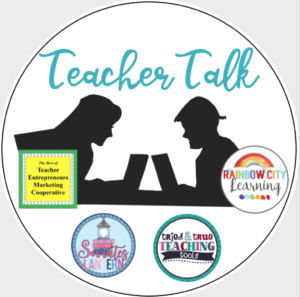Read this Abstract about genetics, and learn how to prevent crime.
Complete Hamster CAD Protein and the Carbamylphosphate Synthetase Domain of CAD Complement Mammalian Cell Mutants Defective in De Novo Pyrimidine Biosynthesis
The mammalian CAD gene codes for a 240-kDa multifunctional protein that catalyzes the first three steps of de novo pyrimidine biosynthesis. Previously, the longest cDNA construct available was missing approximately 500 bp of coding sequence at the 5’ end, thereby lacking the sequence to encode the entire carbamylphosphate synthetase (CPSase domain). Here a complete CAD hamster cDNA is constructed, placed into a mammalian expression vector, and transfected into hamster cells deficient in CAD. Transfectants show coordinately restored levels of all three enzyme activities and the presence of full-length CAD protein. A derivative construct of the CAD cDNA was generated that should encode only the CPSase domain. When transfected into mammalian cells, a protein was synthesized that had significant CPSase activity in both vivo and vitro. The two constructs generated in this study will facilitate the study of CD structure, function, and allosteric regulation.
- Clear yet? No? Read it again. That will definitely help.
- Try harder.
- You can understand it, I know you can, with just a little more effort.
- Still don’t understand? What exactly don’t you understand?
- The vocabulary words are too hard? Look them up in the dictionary.
- What—you can’t even pronounce some of them? It’s not my job to teach you that.
- Try to sound them out yourself, slowly. That will help you understand.
- You don’t have any background knowledge for this? I can’t teach you everything you missed by not paying attention in your classes.
- Ask one of your classmates to explain it to you, or ask your parents to help you.
- You can just memorize the answers from the Study Guide I gave you for this chapter to pass the test.
Surely, by now, you have realized how useless these solutions are to a student who does not have the background knowledge, vocabulary, or reading ability to understand this level of text. It is such a crime when weak readers are often faced with these suggestions from teachers.
Having begun my career as a high school teacher, I know how often these comments happen—too often, especially, from frustrated teachers. On their behalf, I understand that they were trained to teach their subject, not the child. And the problem becomes more complex as students rise in grade level. With a degree in English, not Education, I, too, had almost no training in what to do if students could not read their textbooks. The system gives teachers no solution. See my previous blog post:
How I Got the Textbooks I Needed
Some research indicates the causes of the US dropout problem include poor grades, inability to complete course requirements, dislike of school—all often related to an inability to read at grade level like many of their peers. Where does this leave US? The dropout rate in 2019 was 5%. That is a lot of kids! 1.2 million to be exact, each and every year….and even more have become lost to schools in the COVID pandemic.
Many of these students go on to tedious minimum wage jobs or sometimes…crime. According to the National Adult Literacy Survey it is estimated that 70% of prison inmates can barely read at a fourth-grade level. Crime is often a major issue in elections. Will it be so next year?
No one ever addresses one root of the dropout problem—many kids for years have not been taught fundamental reading skills to mastery because of the never-ending push to complete the curriculum, by primary, intermediate, high school teachers, curriculum specialists, and principals. The textbook is often the curriculum, and individual student needs are not a consideration in each succeeding grade. Textbook vendors claim that the instructional design of the reading textbook will reteach students who don’t understand the first time, but for many students, learning to read does NOT happen if a human being does not intervene.
Some parents do intervene, but others do not. Many educators give only lip service to individual strengths and weaknesses. Teachers provide the same instruction, same homework, same tests, no matter the previous skills, interests, reading, or intelligence levels of particular students. They provide study guides to prop up those students who cannot read or those who can read but do not know how to study.
Lack of attention to mastery for individual students begins in first grade, and continues exponentially until many kids and teachers just give up. How long you would continue to do something that you cannot do well, or even minimally?
Students themselves do bear some responsibility. Social media, gaming, and after-school activities have cut into independent reading time. Reading seems “lame,” especially when Tik-Tok is so much fun! Few teens today read for pleasure except what a friend or social influencer just posted, or what a teacher required. Independent reading of self-selected books has a direct effect on reading achievement because students who do it are practicing the reading skills taught while also enjoying a subject they like.
US education needs a massive redesign for the 21st century, one-fifth of which is now gone. Hurry up! We live in a country in which most of us believe that “all men are created equal.” (Or we used to.) Educating students to attain their own individual potential should be the goal of all citizens who care about our country, and certainly, every teacher.
We need some real energy in US education that designs for individual differences. Equality does not mean everyone has to have exactly the same instruction. Allowing some kids to fall away from learning to read with neglect or pretend concern each year is a moral crime.
Teachers themselves can begin the new school year with independent plans to dent the dropout problem. Start with this FREE reading profile for analyzing individual reading strengths and weaknesses, developed over 30 years as a reading specialist:
A Constructive Reading Profile
Design classes by grouping students for needs, abilities, and sometimes, interests. Stop wasting students’ time. There’s a world of learning out there, for everyone…who can read.
English and ESL teachers might also be interested in Grammar Review: Careers
This set of stories reviews grammar skills while describing a multitude of careers, most of which do not require a college education. It includes two teacher worksheets with item analyses for grouping students according to their grammar needs.
Or you can become politically active and encourage your local school board, legislators, and/or teachers’ unions to address this problem with smaller class sizes and effective, certified reading specialists who do actually remediate elementary students’ reading weaknesses before the situation becomes a major societal problem.
Or tutor just one child individually who seems like s/he might be a future dropout.
Help to prevent a crime.
Godspeed.
Sources:
https://dropoutprevention.org/resources/statistics/quick-facts/why-students-drop-out/<small>\\
https://www.literacymidsouth.org/news/the-relationship-between-incarceration-and-low-literacy/\
© Reading Spotlight 2021

Here are some other interesting posts about education from my friends at TBOTEMC:


